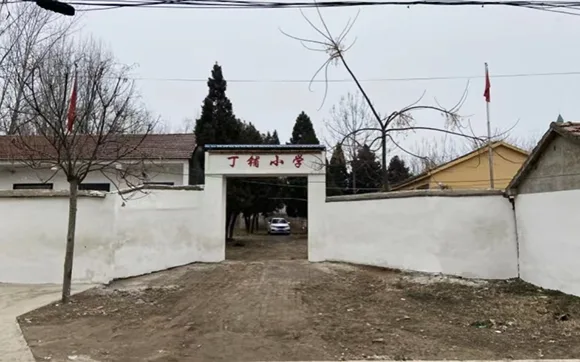Contents
China is the world’s most populous country, but now it’s facing a surprising problem — fewer and fewer babies are being born each year. This big change is starting to affect schools in a major way. Across the country, thousands of primary schools have shut down because there just aren’t enough children to fill the classrooms.
In some places, schools are closing overnight without warning. This isn’t just about education — it shows how deeply China’s shrinking population is changing everyday life.
china population decline
Vanishing Schools in China
In 2012, China had 229,000 primary schools. By 2022, 79,900 of them had shut down. Then in 2023, another 5,645 schools were closed, reducing the total number to 143,455 (That’s like losing one school every 2 hours). Among these, over 614 schools had fewer than 150 students.

The data for 2025 is not publicly available, but the birth rate gives a clear sign. In 2020, the birth rate was 1.28 children per woman, and by 2025, it dropped to 0.9. This shows the school closure trend is still continuing.
It’s now becoming normal to see schools close because there simply aren’t enough children.
Why China’s Schools Keep Closing
1990s to early 2000s, China’s schools started closing mainly because of rapid urbanization — that means people were moving from villages to big cities for jobs and better living. When families left the countryside, small village schools lost their students. So, the government shut many of them down or merged them with bigger schools in towns.
But now, something different is happening. Schools are closing not because students moved away — but because there just aren’t enough students being born at all.
In 2016, more than 18 million babies were born. By 2023, that number fell to just 9 million — cut in half in only seven years.

China’s New Parenting Reality
In 2016, China allowed couples to have two children instead of just one. At first, it looked like a new baby boom had arrived. That year, over 18 million babies were born — the highest in years. Many believed that this change would help fix the country’s ageing population and bring life back to schools.
But it didn’t last. By 2018, the number of births had dropped to 15 million. Then it kept falling — 14 million in 2019, 12 million in 2020, and just 9 million by 2023. Experts call this a birth bust — when a country suddenly stops having as many babies as expected.
China Birth Rate, Death Rate, Natural Growth Rate
| Indicators | 2024 | 2023 | 2022 | 2021 | 2020 | 2019 | 2018 | 2017 | 2016 | 2015 |
| Birth Rate(?) | 6.77 | 6.39 | 6.77 | 7.52 | 8.52 | 10.41 | 10.86 | 12.64 | 13.57 | 11.99 |
| Death Rate(?) | 7.76 | 7.87 | 7.37 | 7.18 | 7.07 | 7.09 | 7.08 | 7.06 | 7.04 | 7.07 |
| Natural Growth Rate(?) | -0.99 | -1.48 | -0.60 | 0.34 | 1.45 | 3.32 | 3.78 | 5.58 | 6.53 | 4.93 |
Why did this happen? Many young couples feel that raising children is too expensive. Jobs are harder to find, homes cost too much, and the pressure to give kids a good life is high. Some people simply don’t want to become parents at all. So, even though the government changed the rules, fewer babies were born.
Regional Warnings: Lessons from the Northeast
If we want to see what China’s future might look like, we should look at the northeast which region consists of Heilongjiang, Jilin, and Liaoning provinces. These places are already facing serious population decline, and the effects on schools have been dramatic.
China Population Decline Across Regions

Why China’s Schools Keep Closing
China’s Regional Average TFR: 2015 vs. 2025
| Region | Provinces Included | TFR in 2015 | TFR in 2023 | Estimated TFR in 2025 |
| East China | Shandong, Jiangsu, Anhui, Zhejiang, Fujian, Jiangxi, Shanghai | ~1.55 | ~1.20 | ~1.10 |
| North China | Beijing, Tianjin, Hebei, Shanxi, Inner Mongolia | ~1.45 | ~1.10 | ~1.00 |
| Northeast China | Liaoning, Jilin, Heilongjiang | ~1.20 | ~1.00 | ~0.85 |
| South Central China | Henan, Hubei, Hunan, Guangdong, Guangxi, Hainan | ~1.60 | ~1.35 | ~1.20 |
| Southwest China | Chongqing, Sichuan, Guizhou, Yunnan, Tibet | ~1.80 | ~1.55 | ~1.40 |
| Northwest China | Shaanxi, Gansu, Qinghai, Ningxia, Xinjiang | ~1.70 | ~1.45 | ~1.30 |
| Special Admin. Regions | Hong Kong, Macau | ~1.20 | ~1.00 | ~0.90 |
In Heilongjiang, almost 60% of primary schools have closed. In Jilin, over 2,600 schools shut down — more than half. Liaoning followed closely, closing nearly 2,200 schools.
The problem in this region is even deeper. The economy in the northeast has been weak for years. Many young people leave the region to find better jobs in big cities. But those who stay behind are often older and less likely to have children. As a result, birth rates in the northeast are now even lower than in South Korea — which has the world’s lowest birth rate.
So, while other parts of China are just beginning to feel the effects of fewer students, the northeast is already far ahead in this crisis.
china population decline
China Population Crisis Causes a Domino Effect
The school closures we’re seeing now are just the beginning. As fewer babies are born each year, the whole education system in China will feel the impact one level after another.
Right now, kindergartens and primary schools are being hit hard. Many kindergartens have already shut down, and thousands of teachers have left their jobs.
But in just a few more years, middle schools will also start to empty out — this is expected to happen around 2029. After that, high schools will feel it by 2032, and then universities around 2035.
China’s declining student population

This slow, steady drop in student numbers means China will have too many school buildings and too many teachers. Some places may have to merge schools, while others may close them down completely. There may even be more teacher layoffs, especially as new technologies like artificial intelligence start changing how students learn.
What’s clear is this: This isn’t just about education. It affects cities, towns, and jobs. Governments will have to decide what to do with empty classrooms and school land. At the same time, they’ll need to find ways to support unemployed teachers.
china population decline
What Happens When Schools Close in China
Losing Safer Jobs in China: Teaching is called an “iron rice bowl” in China, which means a safe and respected job for life. But now, teachers are worried about losing their jobs.
Some teachers may have to leave: Many places are starting something called a “teacher exit plan.” This means some teachers might be asked to leave their jobs at any time. It’s scary, especially for teachers in villages or small towns where it’s hard to find other jobs.
Communities lose more than just schools: In villages, schools are very important. They are places for learning, festivals, family meetings, and village pride.
When schools shut down:
- Shops lose customers
- Families move away
- The village becomes quiet and old
- Teachers losing jobs
- Children travelling far to study
- Towns slowly dying
china population decline
Fewer Students Mean Better Education?
Even though the situation looks serious, there may be a few bright sides to China’s falling student numbers. In fact, having fewer children in classrooms might actually help improve the quality of education — if changes are handled the right way.
Right now, many city schools in places like Beijing or Guangzhou are overcrowded. Some students are placed in schools far from their homes, and the pressure to succeed is extremely high. Every year, millions of children study long hours and attend extra classes just to compete for a few top university spots. This creates stress for both students and parents.
But with fewer students in the future, things could start to shift. Smaller class sizes could mean more personal attention from teachers. Lessons might become more creative, with time to focus on deeper thinking instead of just memorizing facts. Teachers could have the space to know each student better, and help them grow in their own way.
Also, with less competition for university places, students might face less pressure. Instead of chasing only grades, schools could focus on skills like teamwork, innovation, and problem-solving — things that are more useful in the real world.
Some kindergartens in China have already started changing their purpose. Since there are fewer children, they are now redesigning their spaces to care for older people (Elderly care centres), who are becoming a larger part of the population. This shows that change, while difficult, can open up new ideas and new opportunities.

So while the falling birth rate creates big challenges, it also gives China a chance to rethink its education system to make it less stressful, more flexible, and better for the next generation.
Find the Reasons Behind South Korea’s Birth Rate Crisis 2025
Why China’s Schools Keep Closing, What Happens When Schools Close in China, Fewer Students Mean Better Education?, china population, china population decline
